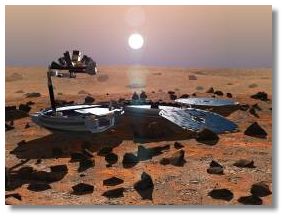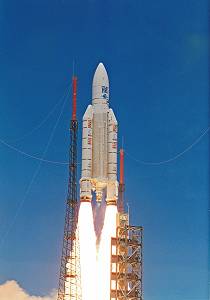Space flight - what for?
Since there is enough problems
on Earth to resolve, why go into space?
 Galileo Galilei’s observations
revolutionized the way how we view our world. Michael Faraday’s work ultimately
gave rise to the construction of the electrical generator. Alexander Graham
Bell’s achievements led to the construction of the telephone.
Galileo Galilei’s observations
revolutionized the way how we view our world. Michael Faraday’s work ultimately
gave rise to the construction of the electrical generator. Alexander Graham
Bell’s achievements led to the construction of the telephone.
These are just a few examples
to demonstrate that the desire to pursue science and adventurous spirit
can lead to new, unexpected results. At the moment of their discovery, many
observations seemed useless, but in the course of time came to fundamentally
change our world. Mental, physical and psychological challenges broaden our
way of perceiving and understanding the world, and boost our understanding
and capabilities.

In a very special way,
human space flight represents such challenges: It pushes the envelope of conventional
thought and directs the mind to work on peaceful and humanistic goals.
By doing so, it touches historical, sociological and political issues. One
of the ideas of space flight is to shift human fantasies from negative, everyday,
egocentric issues to long-term perspectives. To work on global goals gives
hope and stimulates to fight destructive impulses and uncontrollable damage
in a political and social framework.

There is a still deeper dimension
to all this. Looking down from orbit at the only known life-supporting spacecraft
in the Universe -- our Earth -- best helps us to realize our responsibility
for life on Earth, and stimulates the wish to protect it. This emotion
is the starting point for innovations to better understand and protect our
ecosystem ('Earth does not have an emergency exit' - B. Lötsch). Astronauts
get the chance to see our planet from an outside point of view, as a precious
ecosystem within the huge dimensions of space that might quickly be destroyed
by human activity. In fact, astronauts having experienced this kind of emotion,
change their way of thinking and living (Overview-Effect). Earth is home to
every one of us, and every single one of us shares the responsibility for
our common home. Therefore, to put humans in space is not only a technological,
scientific, and biomedical endeavor, but has much more subtle meaning.
Ultimately having the fate of
the entire planet in mind, space life sciences creates important ideas and
concepts in the context of life within Biomes and Biospheres, its exploration,
understanding and protection. It also sets the stage for scenarios of making
our neighbor in the Solar system a life-supporting planet (again?)
i.e., to terraform Mars, and possibly other heavenly bodies as well,
in centuries to come. There is hardly a more challenging peaceful mission
for mankind that could be imagined for the third millennium.

